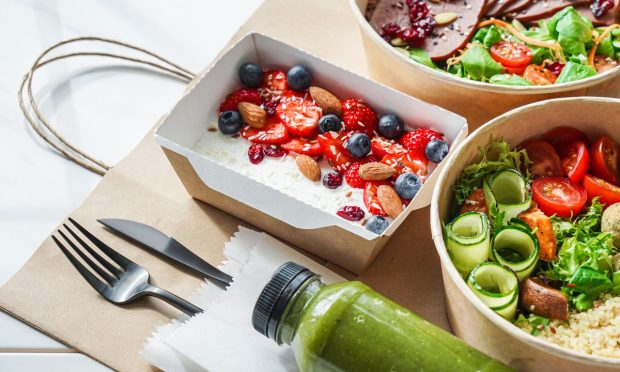Trusted Virtual Brands Boost All-Hours Spending for Restaurants

In the past few years, what it means to be a restaurant has changed. The word may conjure up images of leather-covered menus and white tablecloths, but today, a restaurant does not even need to exist in physical space.
The virtual brand model has taken over the industry, with restaurants adding new, delivery-only concepts to their kitchens to drive revenue on digital ordering channels. Alex Canter, CEO of virtual restaurant company Nextbite, explained to PYMNTS’ Karen Webster in a recent interview that one way restaurants can use the model is to offer items targeting consumers’ off-hour spending, boosting sales at would-be slow times.
“With IHOP, for example, they’re 24/7 at the majority of their locations, but they’re really busier in the mornings than they are at night,” he said. “So, we’ve designed two concepts for them: a grilled cheese concept and a quesadilla brand that is performing exceptionally well from 9 p.m. to 5 in the morning.”
Read more: How a 91-Year-Old LA Deli Inspired the Launch of Next Gen Virtual Kitchen Concepts
Certainly, there is an audience for these virtual concepts. About one in three restaurant customers order from delivery aggregators each month, according to data from the March/April edition of PYMNTS’ Digital Divide series, “The Digital Divide: Regional Variations in U.S. Food Ordering Trends and Digital Adoption, created in collaboration with Paytronix, which drew from a survey of more than 2,500 U.S. adults who regularly purchase food from restaurants.
See also: New Research Shows That Regional Dining Quirks Matter in Tailoring Restaurant Offers
Additionally, some markets are more virtual-brand-friendly than others. The study found that 38% of consumers in the Pacific Region (California, Oregon, Washington, Alaska and Hawaii) of the United States reported having ordered from delivery aggregators in the previous 30 days, while only 28% of those in the Midwest (North Dakota, South Dakota, Nebraska, Kansas, Minnesota, Iowa, Missouri, Wisconsin, Illinois, Indiana, Michigan and Ohio) and the South (Texas, Oklahoma, Louisiana, Arkansas, Missouri, Alabama, Tennessee and Kentucky) said the same.
On the other hand, the drawback of the virtual brand model is that it is harder for the concepts to build trust with consumers, requiring them to go that extra step to create relationships with their customers.
“The most important thing in the virtual restaurant space is trust, and now you don’t know where your food’s coming from, so you’ve lost that connection or that trust,” Geoff Alexander, president and CEO of Chicago-based Asian-style restaurant brand Wow Bao, told Webster in an interview last month. “When you’re in the dining room, you can … talk to your guest. You can take care of their needs. You can build relationships. In the virtual dining segment, that doesn’t exist as much, and it’s up to us as operators to find ways to connect and make the guests feel good eating in their house.”
Related news: ‘Dark Kitchen’ Brands Still Need to Focus on Virtual Hospitality
For the restaurants hosting these virtual brands, being transparent about their ghost kitchen efforts can encourage today’s informed consumers to engage with these offerings, especially if they already have affinity for the brands housing these delivery-only concepts.
“Many of my customers were aware of the of the benefits of having virtual brands and were aware of ghost kitchen in general,” Ahmed Omar, owner of Pizza and Wings Express, an Arizona-based five-location chain that prepares foods for a range of delivery-only brands from plug-and-play virtual brands platform Popchew, recalled in a recent interview with PYMNTS. “When we told them all, ‘We have added a couple of virtual brands to our own business,’ they were saying, ‘Oh, that’s great, so you have more orders, and you can reach more customers.’ … It was a little bit surprising how educated people are.”
You may also like: Transparency Enables Cross-Brand Synergy for Virtual Restaurants
